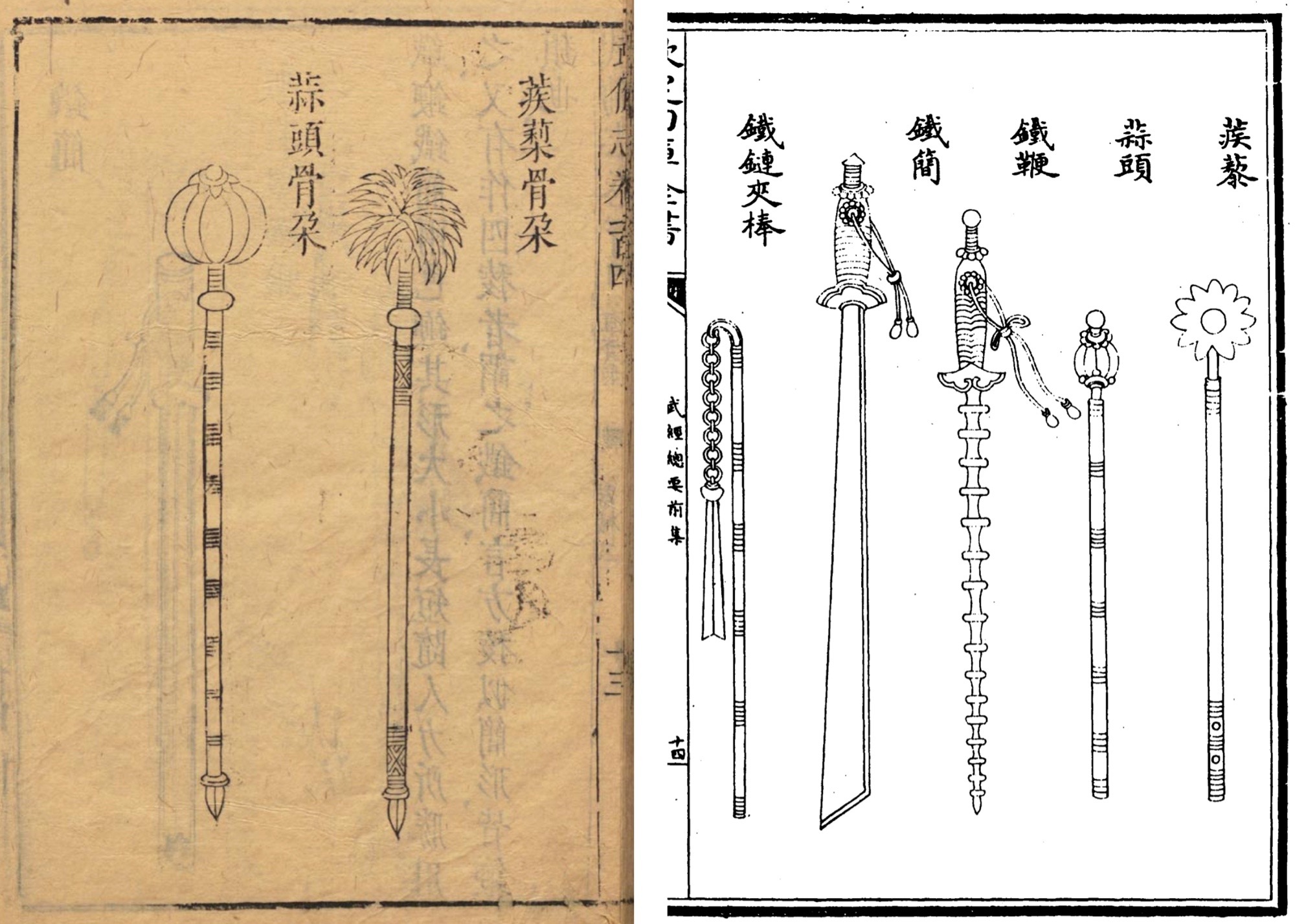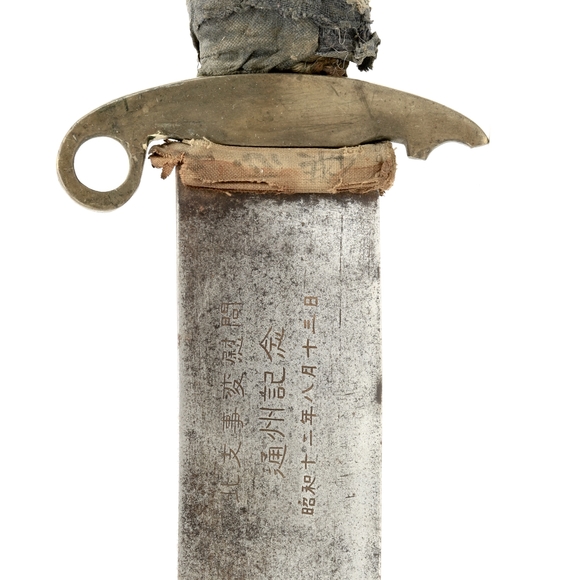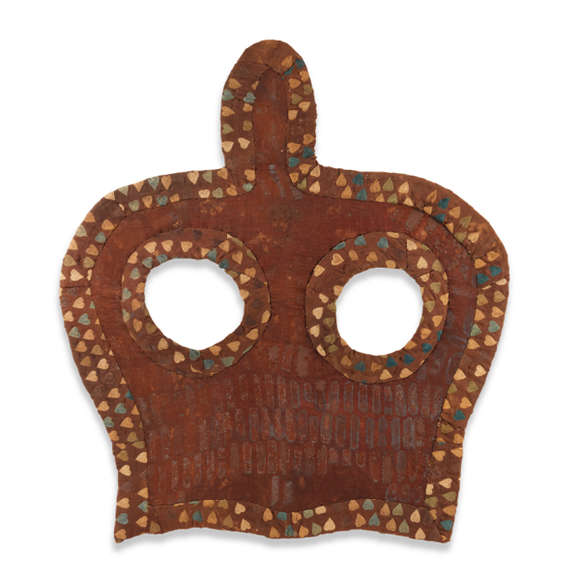Language: Mandarin Chinese
Source: 1621 Wǔbèizhì (武備志), or "Treatise of Military Preparedness" by Mao Yuanyi.
Description
Suàntóu gūduǒ (蒜頭骨朵) literally means "garlic head mace". It appears as such in the 1621 Wǔbèizhì.1 This type of mace appears as early as the Song dynasty, where it is listed in the Wǔjīng Zǒngyào (武經總要) of circa 1040-1044 as Suàntóu (蒜頭), or "garlic head".2

Garlic maces in Chinese sources.
Left: Wǔbèizhì of 1621.
Right: Wǔjīng Zǒngyào of 1040-1044.

A Chinese garlic bulb mace, Ming or Qing dynasty.
Sold by Mandarin Mansion in 2021.
The style seems to have remained in continuous use until the Qing dynasty. Extant examples are hard to date because their styles seem to have changed very little over time.
Notes
1. Mao Yuanyi; Wǔbèizhì (武備志), or "Treatise of Military Preparedness". Compiled 1621.
2. Ding Du & Yang Weide; Wǔjīng Zǒngyào (武經總要) or Complete Essentials for the Military Classics. Circa 1040-1044.






